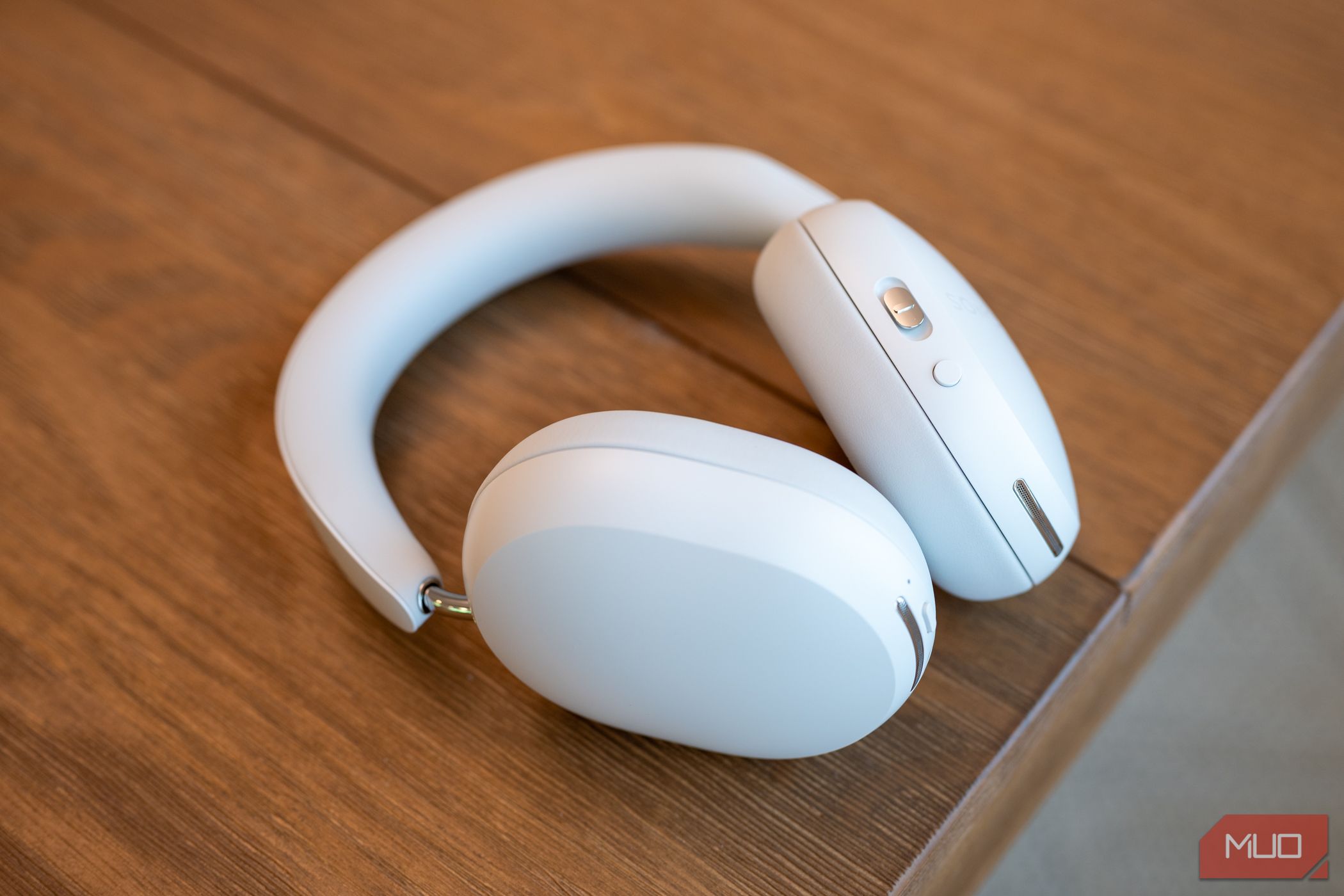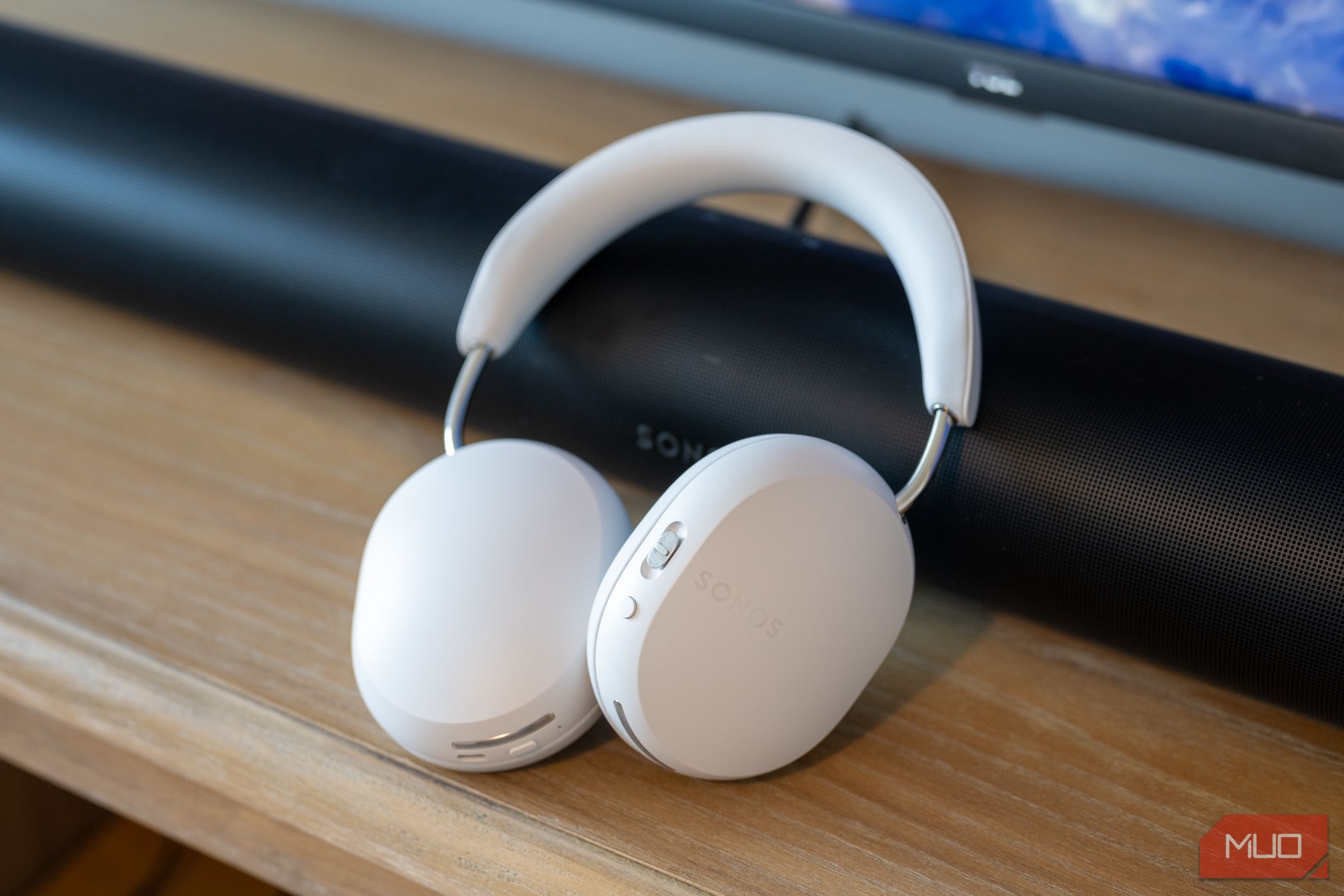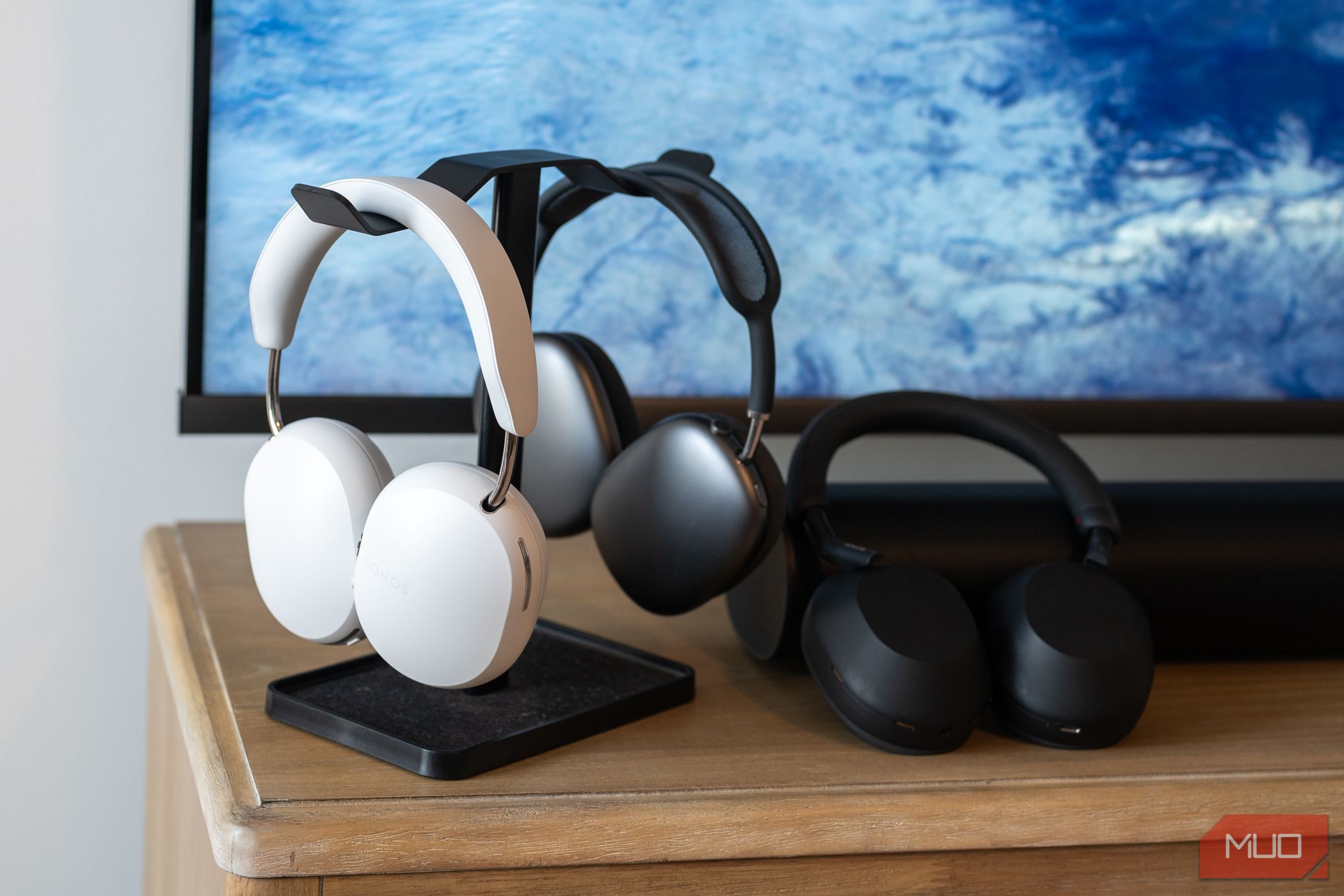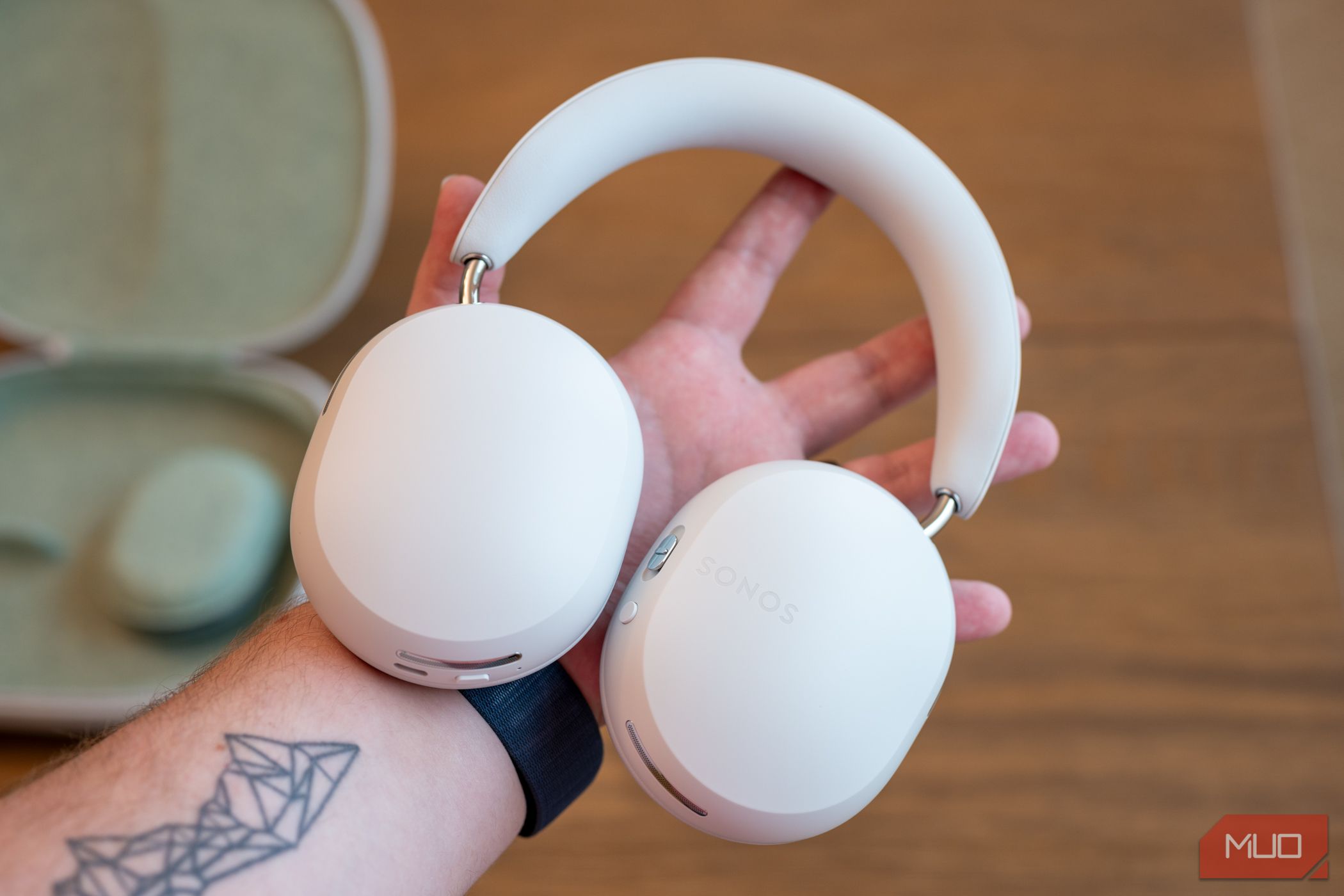Expensive, but a True Sony and Bose Competitor
Key Takeaways
- The Sonos Ace headphones offer fantastic sound quality, ANC, and comfort for long listening sessions.
- Controls are simple and easy to use with physical buttons, but some features are unavailable on Android at launch.
- Priced comparably to high-end headphones, they are a premium choice for music lovers seeking top-notch audio.
After years of rumors and speculation, Sonos has finally entered the headphone market. The company is known for its soundbars and speakers, and I’m happy to report that its premium reputation carries through to the Sonos Ace headphones—both in terms of quality and price.

Sonos Ace
The Sonos Ace headphones deliver a premium over-the-ear experience with high-fidelity sound, spatial audio with Dolby Atmos, and dynamic head tracking, complemented by advanced Active Noise Cancellation (ANC) and Aware Mode. Designed for comfort and durability, they feature memory foam ear cushions, a lightweight headband, and up to 30 hours of battery life.
- Fantastic sound quality, ANC, and Transparency mode
- Incredibly comfortable for long listening sessions
- Controls are simple and easy to use (with physical buttons)
- Not all features available on Android at launch
- Doesn’t work with most Sonos soundbars at launch
- Price is comparative to other high-end headphones, but they’re still expensive
Price and Availability
The Ace headphones are $449 and can be purchased directly from the Sonos website, Amazon, and Best Buy. They’re available in Black or Soft White and come with USB-C to USB-C and USB-C to 3.5mm cables.
If you want to save a couple of bucks, Sonos offers a discount when you purchase a pair of Ace headphones or bundle them with an Arc soundbar.
Specifications
- Battery Life
- 30 hours
- Weight
- 0.69lbs (312.97g)
- Microphones
- 8
- Connection Type
- Wireless, 3.5 to USB-C, USB-C to USB-C
- Connectivity
- Bluetooth 5.4
- Charging type
- USB-C
- Noise Cancellation
- ANC
- IP rating
- Not rated
- Sensors
- On-head detection
- Driver size
- 40mm
Comfort Is King
No matter how good the sound quality is (which is fantastic—more on that below), if my headphones aren’t comfortable, there’s no way I’m going to enjoy the experience. The good news is that Sonos’ first-ever pair of headphones nailed the fit.
The Ace’s headband and earcups feature an incredibly plush and soft vegan leather-wrapped memory foam. I’ve worn these for multiple 4-5 hour listening periods, including on a domestic flight, and my ears never got sore. With some headphones, you take them off, and your ears sigh with relief. I experience this when wearing the Beats Studio Pro. But even when I’m sporting my Ray-Ban Meta Smart Glasses, the clamping force of the Sonos Ace never becomes a nuisance.
Before this review, the Bose QuietComfort Ultra Headphones accompanied me on every flight. This was partially due to their weight: at just 254g, they are over 50g lighter than the Sonos. I expected this to bug me, but I hardly noticed the difference.
The plastic casing with its matte finish looks and feels nice, but I need to talk about the headphone’s buttons. I cannot express how amazing they feel to press. There’s just this satisfying mechanical click as you power the device on and switch between listening modes. Anything is better than gesture controls, but these feel purposeful, with intuitive actions.
On the left cup, you’ll find a narrow button that powers the Ace on and off and pairs the headphones with your phone, tablet, or computer. These support Bluetooth multipoint, so you can set them up with two devices simultaneously and switch back and forth without the need to reconnect. Next to that button, you’ll find an LED indicator light and a USB-C port. It can be used to charge the headphones (these have an advertised 30 hours of listening time) and listen to audio via a wired connection.
Moving over to the right earcup, you’ll find a round button to switch between active noise cancelation (ANC) and Aware mode (also known as Transparency mode). And next to that, there’s a switch that Sonos calls the Content Key. This is the master “button” that can be slid up and down to adjust volume and pressed to play and pause music and answer or hang up phone calls.
As much as I love pressing these buttons, I have a nitpick with placement. The power button on the left is placed on the bottom of the cup and is easy to find. The Content Key and mode switch button on the right cup are much higher up. I never quite got used to their arrangement and searched for the Content Key almost every time I raised or lowered the volume. It’s not the end of the world, but when one of my colleagues made the same complaint unprompted, I knew I wasn’t the only one who didn’t like the placement.
One area where the Sonos Ace falls short, in my opinion, is its microphone quality. Eight microphones are spread evenly between both earcups, hidden beneath metal mesh to help minimize wind noise. Unfortunately, as you can hear below, someone on the other end of a call will definitely know you’re using your headphone microphone.
The good news is that nobody complained to me about mic quality. I took calls and spoke in Google Meet meetings using the Sonos Ace, and people heard and understood me just fine. The Ace’s microphones only disappoint because they’re in stark contrast to the fantastic sound quality. They get the job done, but these headphones are definitely made with listening to music as their primary goal.
Everything Sounds Amazing
As I note in all of my audio reviews, I am far from an audiophile, but I really enjoy listening to headphones and speaker systems. There’s not much better than clear vocals and deep bass while listening to your favorite album or hearing dialog while explosions go off in the background of an action movie. It costs a premium for such an experience—which the Sonos Ace certainly do—but you get the whole package.
After two weeks of testing, the Sonos Ace have checked all of my boxes. These sound great whether I’m listening to Rush’s “Tom Sawyer,” a podcast, or watching a car chase in “Baby Driver.” It’s evident that Sonos put all of its audio expertise into these 40mm drivers.
ANC and Transparency mode are two features that were also make or break for me. Its competitors—especially the AirPods Max—are amazing at blocking out white noise but also letting in the world around you. While Aware mode is extremely good, I don’t think it’s best-in-class (though it’s extremely close). You can hold conversations, but it’s clear the other person’s voice is being pipped through those eight microphones.
The ANC quality is amazing. I wore the Sonos Ace on a recent flight, and the experience was everything I had hoped for. As soon as I hit the noise control button, the low rumble of the plane disappeared, and I felt perfectly isolated. Without any audio coming through, I could still hear the low murmur of my fellow passengers talking, but they faded away as soon as I turned on some music.
Those of you into lossless audio will also be happy. Sonos supports Qualcomm Snapdragon Sound AptX over Bluetooth when connected to Android devices (sorry, iPhone owners) and over USB-C.
If you’re ever unhappy with the audio quality, you can use the Sonos App (available for iPhone and Android) and fiddle with bass and treble sliders. And while you have the mobile app open, you can also use it to adjust spatial audio head tracking, enable Bluetooth multipoint, update the Ace’s firmware, and more.
I can’t talk about the Sonos app without noting the recent overhaul that removed features. Many long-time Sonos owners are currently mad at the company because the app was relaunched with missing functionality (like sleep timers and the ability to manage local files). Most of the missing items will come back in future updates, but they are not yet available as of publishing.
The Sonos Ace Are Made to Last for Years
Just like the AirPods Max, both ear cushions are user-replaceable. Magnets hold these in place, so they’re easy to pop on and off, and the connection is strong enough that I never worried about them accidentally falling off.
With the earpieces removed, you can see that the left and right sides are color-coded on the headset and the cushions. These help you reinstall them correctly, though it would be hard to mess up. The magnets are polar opposites, so the cushions refuse to connect to the wrong side.
If you ever need to replace the ear cushions, you can get a new set for $49.
The Case Is Nice Enough
The Sonos Ace come packaged in a hard case wrapped in a recycled felt-like material. Thankfully, the case is pretty low-profile—barely thicker and wider than the headphones themselves—so I had no difficulties fitting everything into my backpack.
Annoyingly, that perfect fit means you must compress the headband to return the headphones to the case. When it’s time to take them out, you’ll have to readjust the size. The good news is that once you get the right fit, the frictionless stainless steel bands are rock solid, so they won’t loosen over time.
I’m mostly indifferent to it, but I’m also not the biggest fan of the magnetically attached cable pouch. The pouch stayed in place except when I really shook the case while it was empty, but actually getting your cords in and out of the accessory isn’t a great experience.
The recycled felt material on the case also lines the pouch, but it feels pretty cheap here. You pinch it together to access your cables from inside, but getting both wires back in neatly is not the easiest. I found winding up both cords and then pushing them in worked, but I wish there was a more elegant way of doing it, especially since USB-C cables are damage-prone.
(Some) Soundbar Integration
One feature the company highlights with the Ace is its ability to connect to your home’s Sonos soundbars and “Audio Swap.” Basically, if you’re in the same room as your soundbar, you long-press on the Ace’s Content Key, and your TV’s audio will be sent to the headphones. The Apple TV offers similar functionality, allowing you to switch your TV’s auto from the speakers to your AirPods.
In testing, this feature worked as advertised. I quickly switched back and forth between my Sonos Arc and Ace without any audio lag or disruption. I was honestly surprised by how smoothly everything worked.
I don’t see myself using this feature too often, but it’s perfect for anyone who wants to sit down and watch TV without disrupting others. Plus, you don’t lose out on surround sound and spatial audio when switching to the headset. The experience isn’t as great as a true multi-speaker setup, but it’s better than waking up others who might be asleep.
If you have multiple Sonos soundbars in your home, the Ace should be able to identify which speaker you’re in proximity to and correctly pull audio from the TV you’re sitting in front of. I couldn’t test this, but Tyler Hayes, Reviews Editor at How-To Geek, got the feature to work without fuss with two soundbars in different parts of his house.
Unfortunately, Audio Swap is only available for iPhone owners at the time of writing, and it only works with the Arc soundbar. The feature will roll out to Android and the rest of Sonos’ soundbar lineup, but it isn’t available at launch.
The Perfect Combination of Apple, Bose, and Sony
The first time I saw the Sonos Ace, I immediately recognized characteristics I liked about the AirPods Max, Bose QuietComfort Ultra Headphones, and Sony WH-1000XM5. Although the casing isn’t made out of metal, the Ace have the polished styling of the AirPods, they’re super comfortable, like the Bose, and the spectacular audio quality reminds me of Sony.
It’s clear that these four products are the flagship offerings for those looking for premium over-ear headphones. I don’t think you can go wrong with any of them because they all sound great and offer similar levels of functionality, including ANC and Transparency mode. Choosing between Apple, Bose, Sonos, and Sony will likely come down to your budget and any unique features that fit your personal ecosystem, like Audio Swap if you own a Sonos soundbar or quick switching if you use a lot of Apple products.
Should You Buy the Sonos Ace?
I recommend the Sonos Ace without hesitation if you want a pair of high-end Bluetooth over-ear headphones. They’re expensive, but so are its direct competitors. They sound great, look sleek, and are comfortable enough to wear for extended periods.
The biggest thing against them is the lack of Audio Swap support for those with Android phones and non-Sonos Arc soundbars. Fortunately, that should be resolved in a matter of months, but still, the headphones shipped missing core functionality for some. Once that’s fixed, the Sonos Ace should work perfectly for you, whether you use an iPhone or an Android.
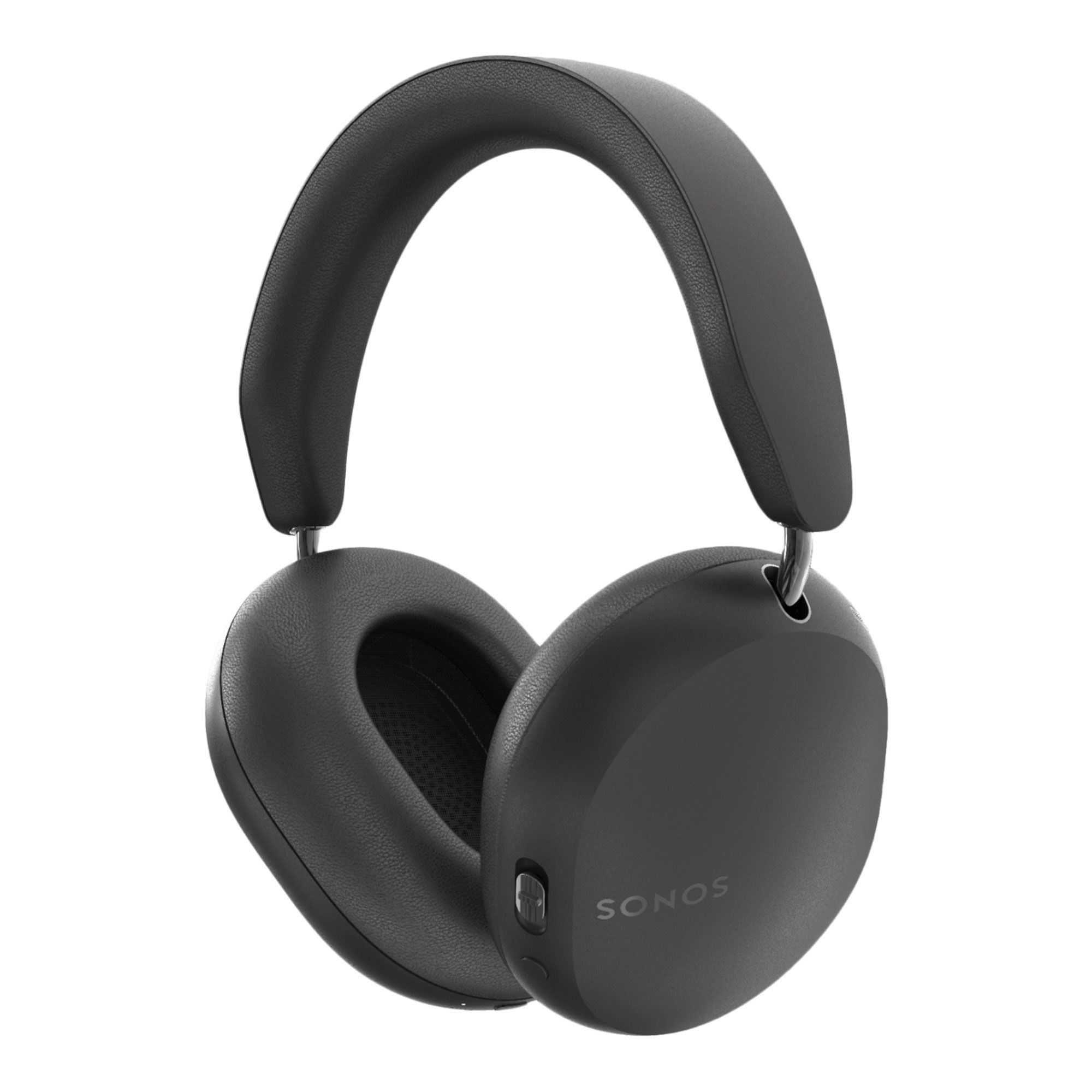

Sonos Ace
The Sonos Ace headphones deliver a premium over-the-ear experience with high-fidelity sound, spatial audio with Dolby Atmos, and dynamic head tracking, complemented by advanced Active Noise Cancellation (ANC) and Aware Mode. Designed for comfort and durability, they feature memory foam ear cushions, a lightweight headband, and up to 30 hours of battery life.

